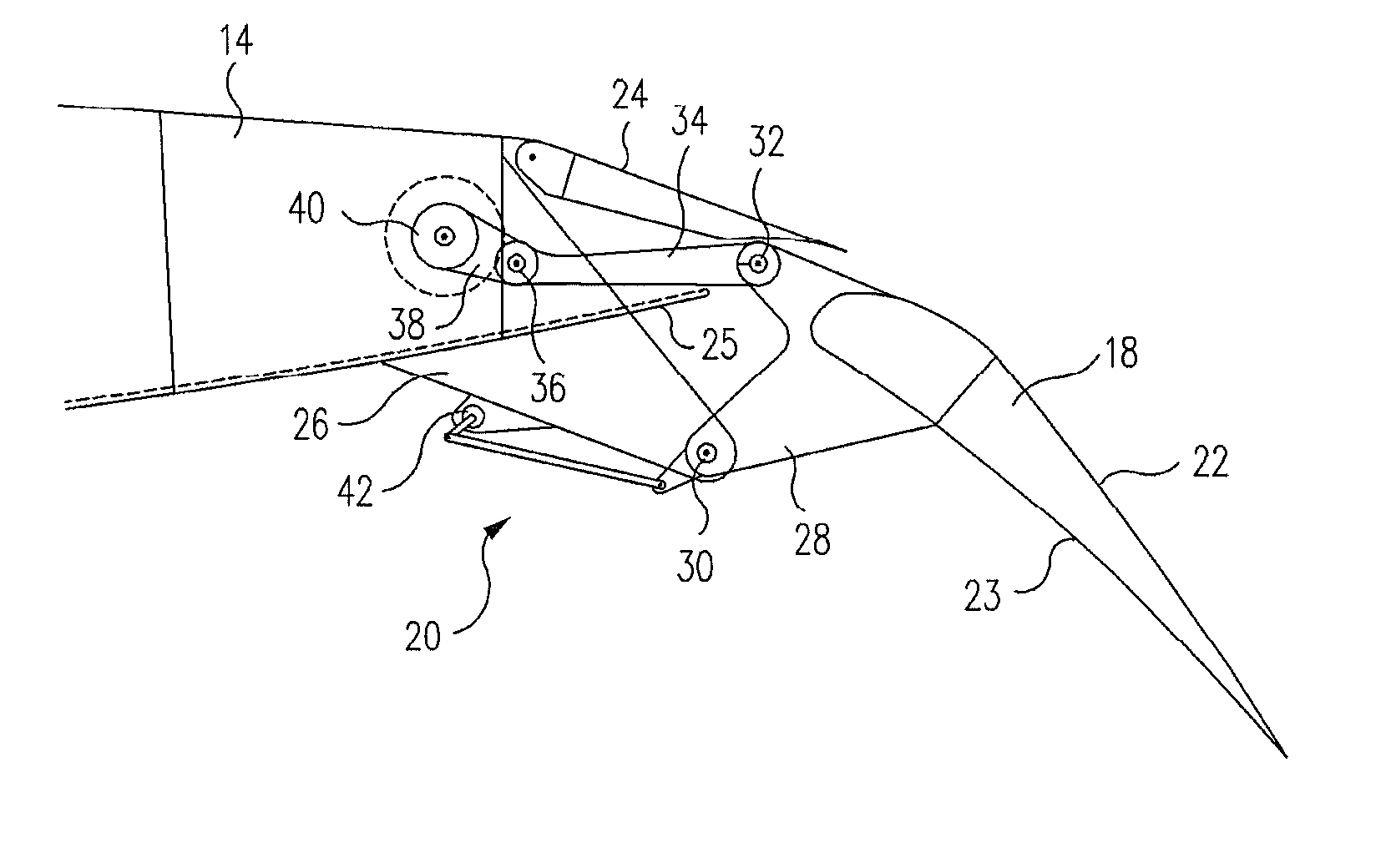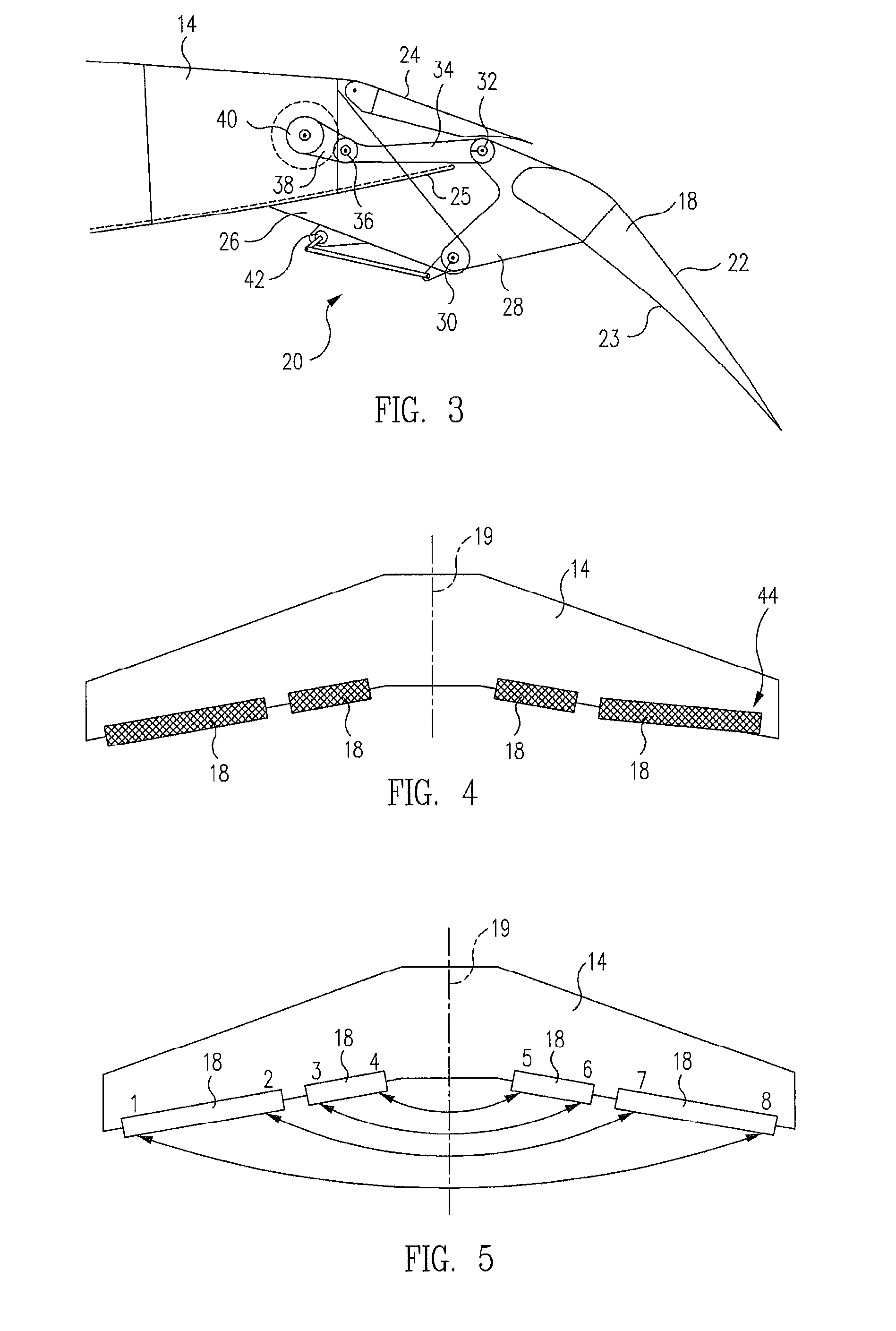In-flight detection of wing flap free wheeling skew
a technology of in-flight detection and wing flap deflection, which is applied in the field of aircraft flight sensors, can solve the problems of low accuracy of flap sensors, more serious failure, and inability to detect the type of failure usually not obvious, and achieve the effect of accurate and reliable detection of small flap surface deflection during fligh
- Summary
- Abstract
- Description
- Claims
- Application Information
AI Technical Summary
Benefits of technology
Problems solved by technology
Method used
Image
Examples
Embodiment Construction
[0019]FIGS. 1 and 2 are perspective and partial top plan views of a modern jet aircraft 10 of a type to which the freewheeling skew detection system and methods of the present disclosure have advantageous application. With reference to FIGS. 1 and 2, the aircraft comprises an elongated fuselage 12 having a pair of sweptback wings 14 respectively disposed on opposite sides thereof that are adapted to generate lift as the aircraft moves through the air. Each wing includes a jet engine 16 supported on a pylon below the wing and a pair of flaps 18 supported at the trailing edge (TE) thereof by a pair of flap drive mechanisms 20 for extension, i.e., pivotal and translational movement relative to the TE of the wing. As illustrated in FIGS. 1 and 2, the flaps are disposed symmetrically with respect to the sagittal plane 19 of the aircraft and, in operation, are extended and retracted simultaneously with each other.
[0020]FIG. 3 is a partial cross-sectional view of one of the TE flaps 18 of ...
PUM
 Login to View More
Login to View More Abstract
Description
Claims
Application Information
 Login to View More
Login to View More - R&D
- Intellectual Property
- Life Sciences
- Materials
- Tech Scout
- Unparalleled Data Quality
- Higher Quality Content
- 60% Fewer Hallucinations
Browse by: Latest US Patents, China's latest patents, Technical Efficacy Thesaurus, Application Domain, Technology Topic, Popular Technical Reports.
© 2025 PatSnap. All rights reserved.Legal|Privacy policy|Modern Slavery Act Transparency Statement|Sitemap|About US| Contact US: help@patsnap.com



